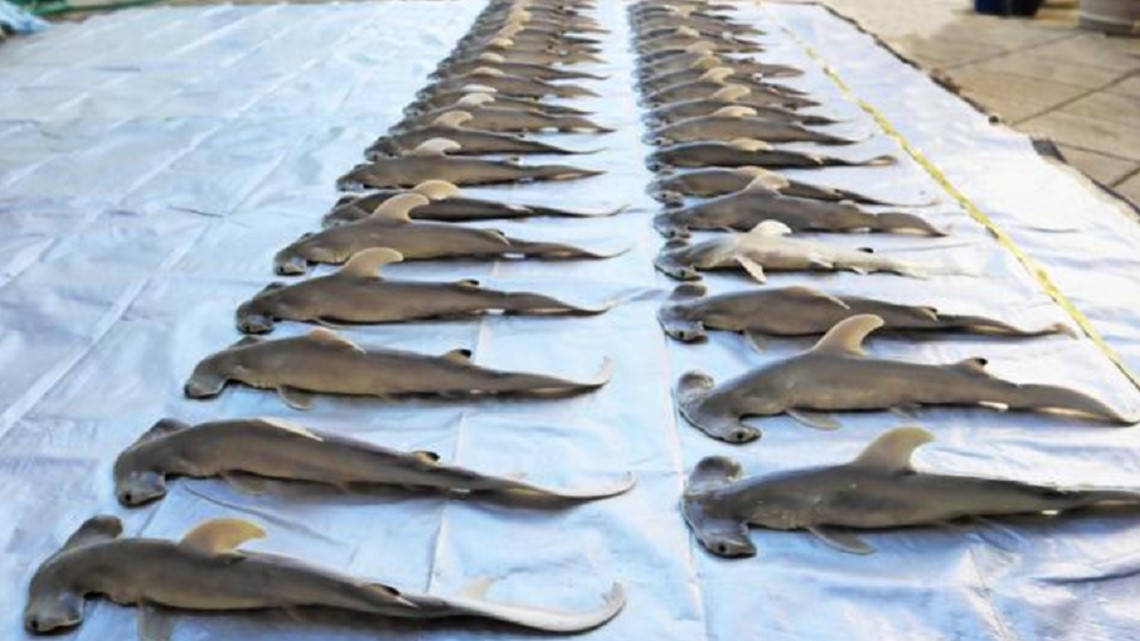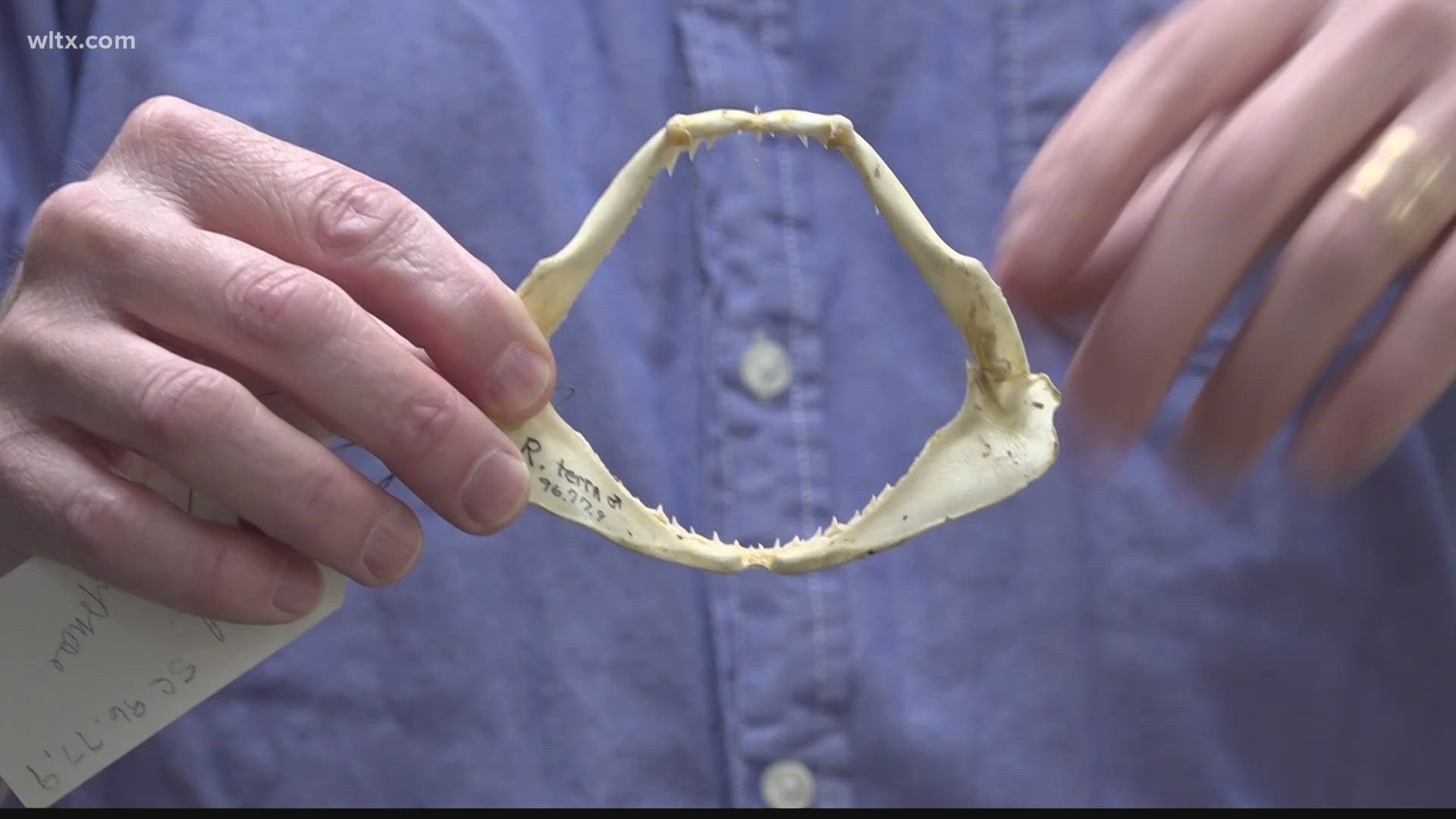ORANGE BEACH, Ala. — Ecologists are examining the remains of a pregnant 14-foot-long great hammerhead shark that washed up ashore on an Alabama beach on April 20.
A day after the shark washed ashore, ecologists from the Mississippi State University Coastal Research and Extension Center traveled to Orange Beach in Alabama to examine a deceased great hammerhead shark and its 40 pups, which were all dead when they washed up ashore, MSU Marine Fisheries Ecology said in a post on Facebook.
Scientists examined the shark's major organs, including its heart, stomach and kidneys, and none showed any signs of trauma.
"Moreover, there were no abnormal lesions or unusual parasites," MSU said.


Scientists said that while it was "impossible" to determine the cause of death with absolute certainty, they suspect the shark died as a result of fishing mortality — that is, likely because it was accidentally caught. They noted that great hammerheads are more prone to the physiological effects of capture stress than other shark species and pregnancy aggravates physiological stress.
After obtaining samples, the MSU scientists brought them back to the university lab for further analysis. Among the samples taken were several vertebrae from the adult shark.
"These can be used to determine the age of the shark and its birth location. Vertebrae can also be used to examine population structure and connectivity," MSU said.
Scientists also removed muscle tissue from the mother shark to determine its feeding habits, the stomach, and several fin clips as well to "contribute to a current study examining genetic population structure, as well as the number of breeding individuals in the population."
Fin clips were also removed from each of the pups in order to determine relatedness among the siblings, because the broods of many sharks are usually sired by more than one male shark in a phenomenon known as "multiple paternity," according to MSU.
Scientists said the number and size of the pups also provide important information about brood size and the timing of birth.

